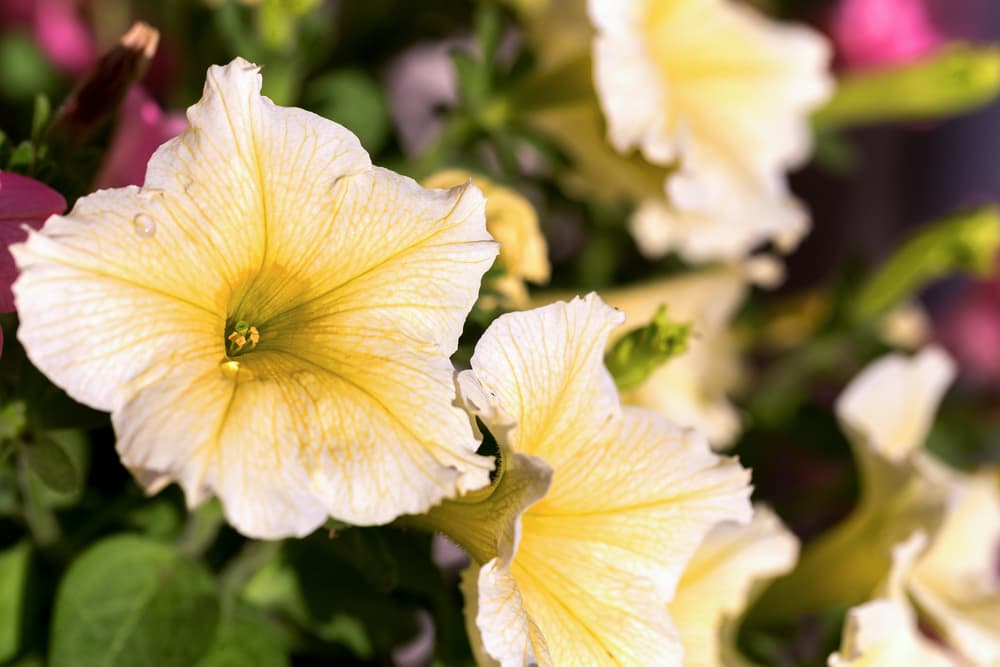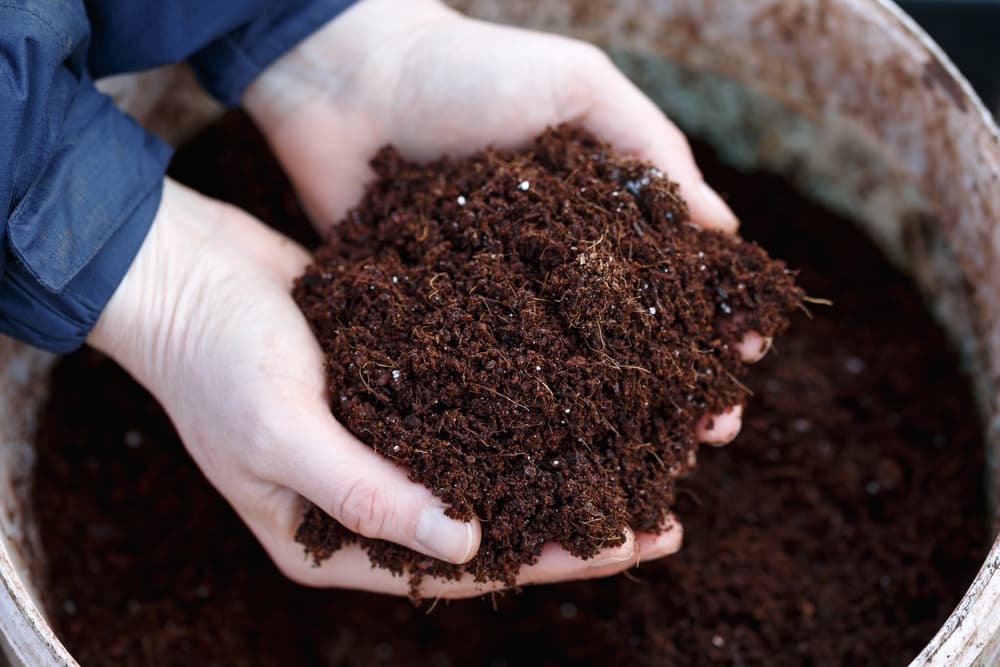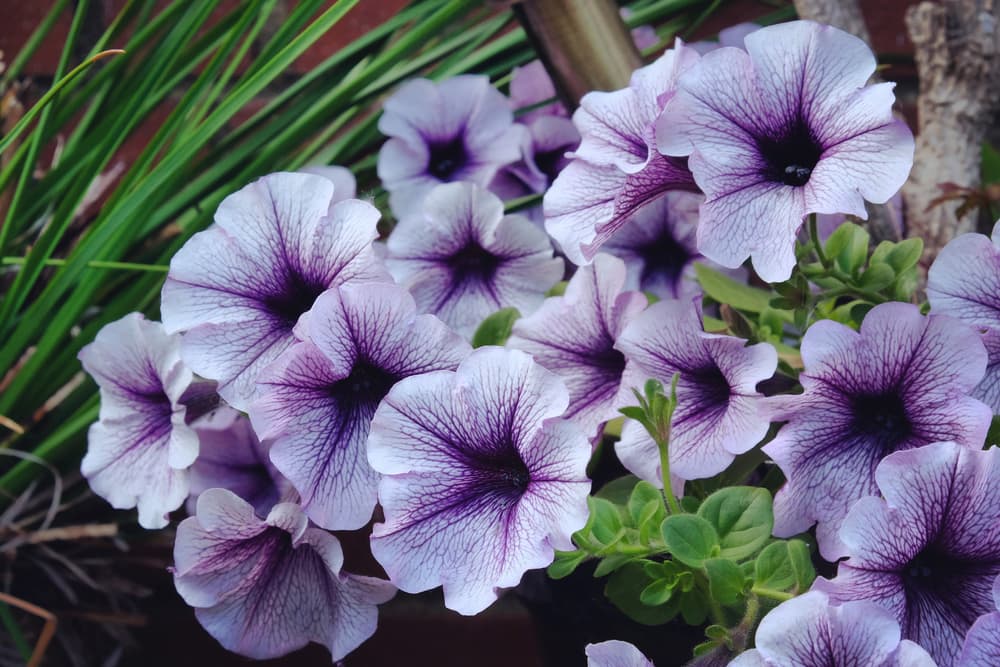Surfinia® Petunias Are Carefully Bred For Their Trailing Habit – Here’s How To Grow Them


Elizabeth is a Permaculture Garden Designer, Sustainability Consultant and Professional Writer, working as an advocate for positive change. She graduated from the University of St. Andrews with an MA in English and Philosophy and obtained a Diploma in Applied Permaculture Design from the Permaculture Association.
Reviewed By COLIN SKELLY

Colin is a Horticulturist and Horticultural Consultant with experience in a range of practical and managerial roles across heritage, commercial and public horticulture. He holds the Royal Horticultural Society’s Master of Horticulture award and has a particular interest in horticultural ecology and naturalistic planting for habitat and climate resilience.
IN THIS GUIDE
PETUNIA GUIDES
Container Growing
Deadheading
Hanging Baskets
Legginess
Overwintering
Pruning
Sowing
Surfinia
If you are looking for trailing bedding petunias then Surfinia can be a great option to choose.
If you want instant impact and a garden which reliably looks good all summer long, then this brand of trailing petunias could be an excellent choice.
Surfinia is sometimes a name mistakenly applied to all trailing petunias – but this is like calling all vacuum cleaners ‘hoovers’.

Surfinia is a registered brand name for a particular range of trailing petunias which make very popular bedding plants, frequently used in containers, window boxes and hanging baskets.
They were specifically and carefully bred for their trailing habit, long blooming period, and weather tolerance.
Overview
| Botanical Name | Petunia ‘Surfinia’ (TM) |
| Common Name(s) | Trailing Petunias |
| Plant Type | Perennial (grown as an annual) |
| Native Area | Cultivated |
| Hardiness Rating | H2 |
| Foliage | Deciduous |
| Flowers | Various hues |
| When To Sow | May, June, July, August |
| Flowering Months | June, July, August, September, October |
Sunlight
Preferred
Full Sun
Exposure
Sheltered
Size
Height
0.1 – 0.5M
Spread
0.5 – 1M
Bloom Time
June – October
Soil
Preferred
Loam, sand
Moisture
Well-drained
pH
Any
Surfinia’s story began in 1987 when Japanese breeders discovered a new petunia variety with fantastic flowering and growing characteristics.1History of Surfinia. (2020, October 2). Surfinia. Retrieved March 22, 2023, from https://surfinia-official.com/history/

According to the brand – the name comes from the word petunia and the word ‘Surfin’ as the flowers were thought to grow like waves on the flower fields.2Did You Know… (2020, April 20). Surfinia. Retrieved March 22, 2023, from https://surfinia-official.com/tips-tricks/fun-facts/
This was the first trailing petunia brand on the market, and still dominates the market today.
Why Grow Surfinia Petunias?
Surfinia petunias are so popular because they:
- Have a pleasing trailing habit.
- Bloom from spring right through to the first frosts.
- Are tolerant of a wide range of conditions and weather and should be reliable wherever you live.
- Come in a huge range of hues.
- Don’t need deadheading because the flowers shed on their own.
Surfinia Varieties
Surfinias are purchased as plug plants or bedding plants throughout the spring and summer months.

There is a classic range to choose from, with many different colours, and also a newer range of earlier flowering Surfinia petunias.

Some popular options within the classic range include:
- ‘Velvet Blue’
- ‘Blue’
- ‘Heavenly Blue’
- ‘Sky Blue’
- ‘Deep Red’
- ‘Burgundy’
- ‘Purple’
- ‘Hot Pink’
- ‘Rose Vein’
- ‘Purple Vein’
- ‘Yellow’
- ‘White’
And in the early flowering range, you might consider, for example:
- ‘Trailing Light Yellow’
- ‘Trailing Red’
- ‘Trailing Blue Ocean’
Planting Surfinia
Surfinia is best purchased and planted in spring or early summer, and planted out any time after the risk of frost has passed in your area.
If there is still a risk of frost it is important not to plant out too early.

When choosing where to plant Surfinia, remember that these plants require a sunny spot, and will look their best when they are hanging, or allowed to trail freely over the sides of a container.
They can also cope with partially shaded conditions but will not flower as well as they will when grown in full sun.
The container that you choose should be free-draining, with drainage holes to allow water to escape.
These petunias do not like having wet feet; root rot and other issues can creep in if drainage is not sufficient.
The container should be filled with multi-purpose compost; adding coconut coir can also provide optimal conditions.

Try a mix of 45% good quality multipurpose compost and 45% coconut coir, with 10% optional perlite, vermiculite or horticultural grit for improved drainage.
Since they are vigorous plants, it is best to grow these in containers on their own.
Though of course you can group containers and grow a range of other plants in pots or hanging baskets close by.
Surfinia Petunia Care
Surfinia petunias are generally very easy to care for, but as always when growing in hanging baskets or other containers, it is important to think about watering and fertility.
Watering
Petunias do need moist conditions, but are relatively drought-tolerant, which does make them a good choice for hanging baskets and containers, where water will deplete more quickly.

Water regularly in dry conditions, and try to make sure when watering that you water the roots – while trying to avoid wetting the flowers and foliage as much as possible.
Also make sure that water is able to drain away freely.
Feeding
There are fertilisers specifically formulated for Surfinia. However, in an organic garden, you will avoid the use of synthetic fertilisers.
Still, Surfinia and other petunias will need nutrition, and when growing in containers, will usually need more than the growing medium can provide.
So water with an organic liquid plant feed for flowering plants regularly over the summer months.

Choose a balanced feed early on, and one high in phosphorus for good blooms later on.
Pruning
You do not need to prune petunias like these – however, you may wish to prevent the top of a display from becoming too flat by pruning the stems at the centre of a basket to encourage bushier growth at the heart of the space.
“I don’t generally deadhead in the garden, but Surfinia Petunias are one that I would,” shares Horticultural Consultant Colin Skelly.
“Because of the size of the flowers, spent flowers really detract from the appearance. I don’t use secateurs, but just twist and pull to remove.”
Remember, there are plenty of beautiful flowers that you can grow yourself from seed, and many perennial options that will return year after year.
But for an easy and high-impact, low-effort option, Surfinia could be a good choice for your annual garden display.
References
- 1History of Surfinia. (2020, October 2). Surfinia. Retrieved March 22, 2023, from https://surfinia-official.com/history/
- 2Did You Know… (2020, April 20). Surfinia. Retrieved March 22, 2023, from https://surfinia-official.com/tips-tricks/fun-facts/
